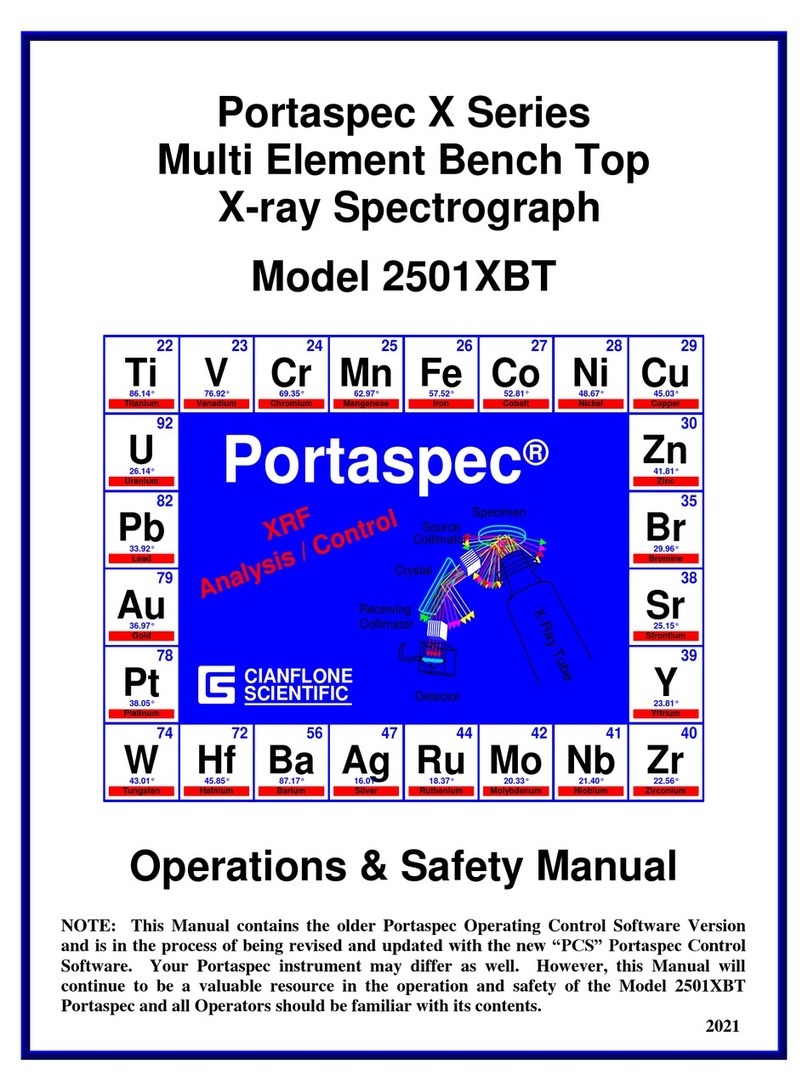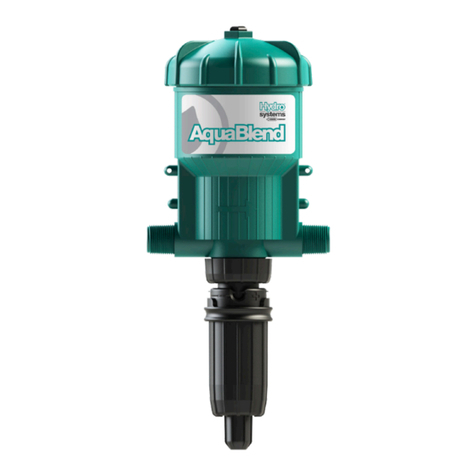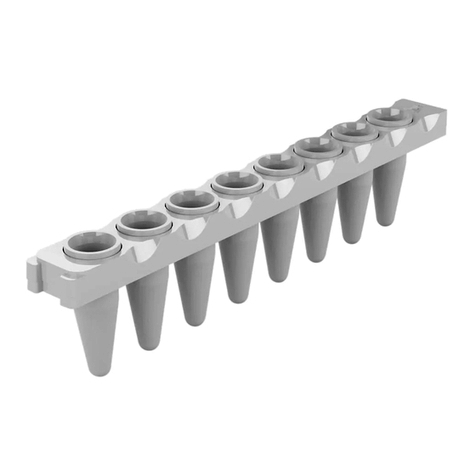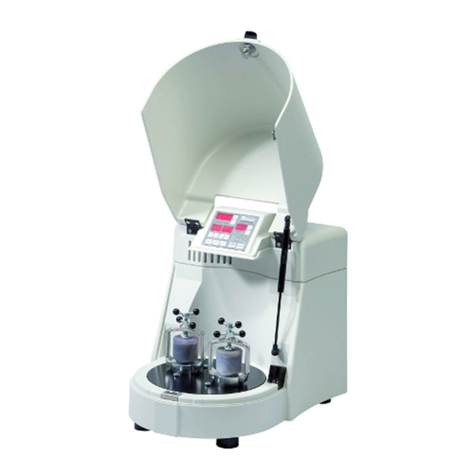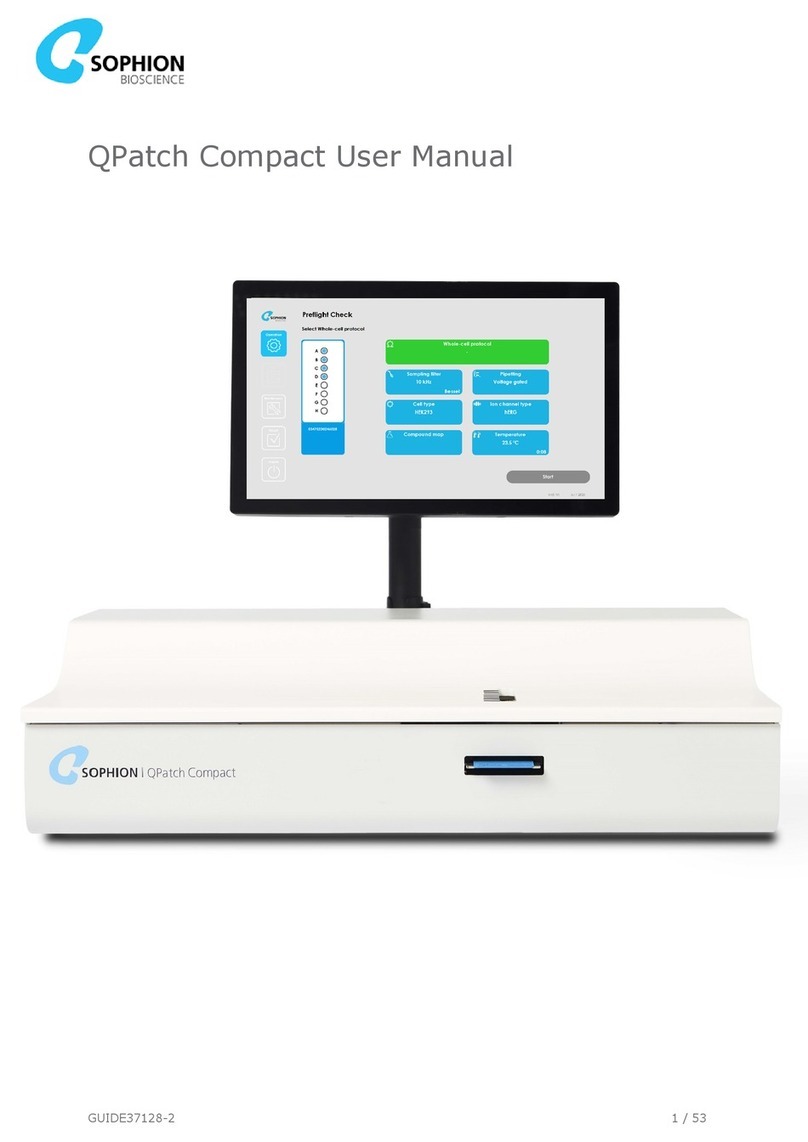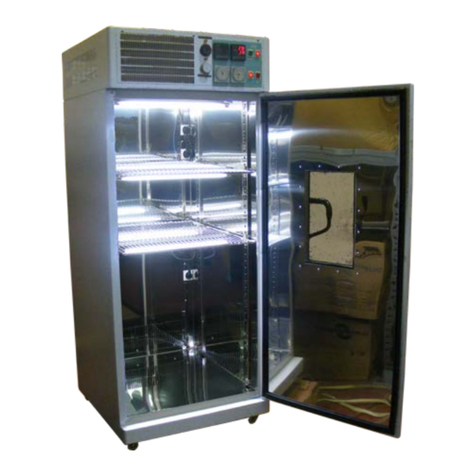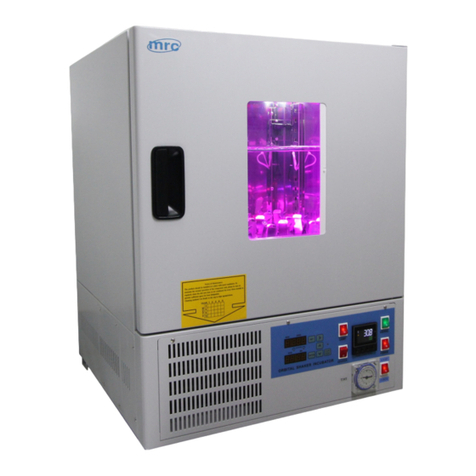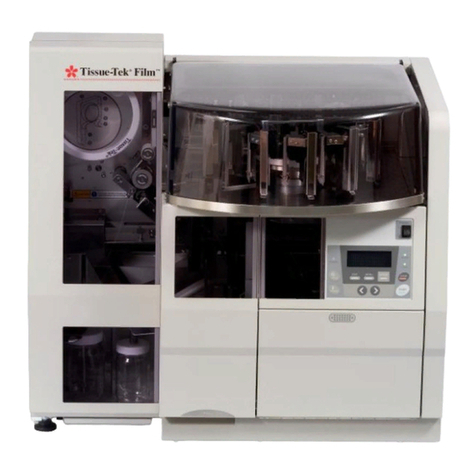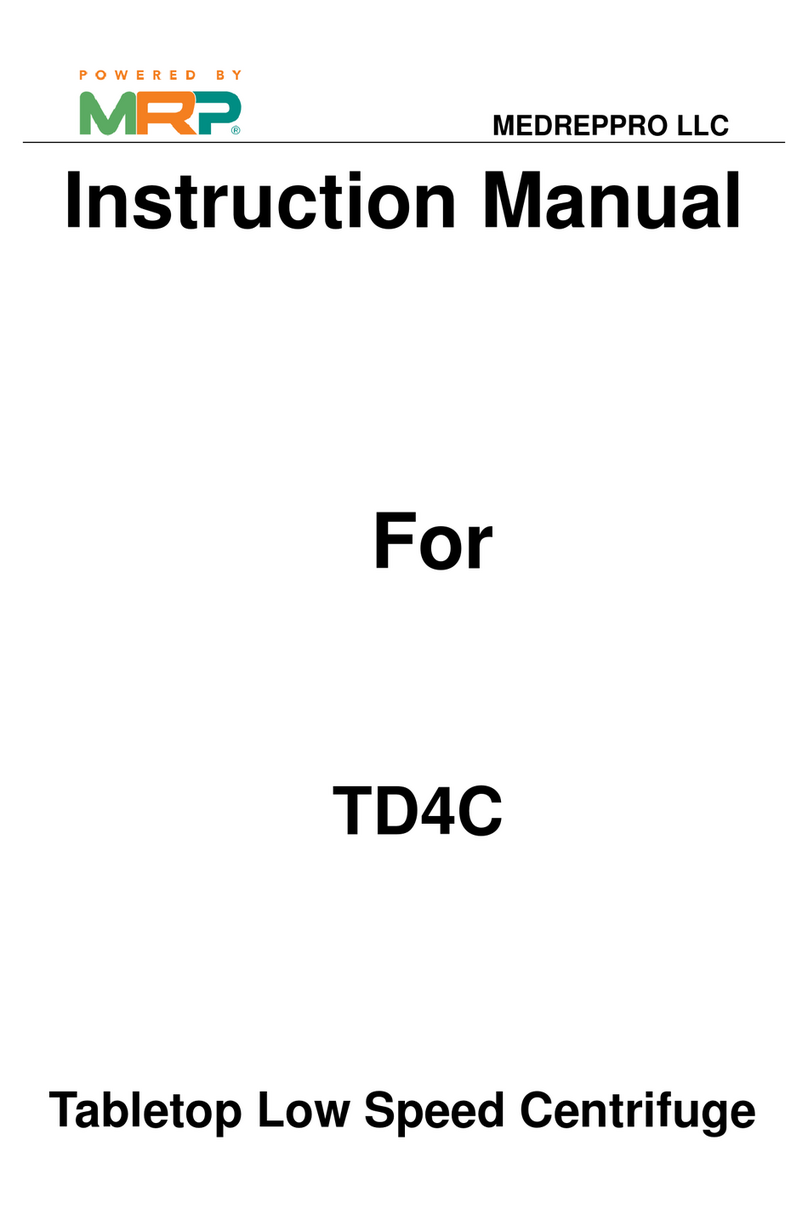CIANFLONE 2701 User manual

OPERATING INSTRUCTIONS
FOR
MODEL 2701 ELECTRIC ARC BUTTON REMELT FURNACE
The Model 2701, Electric Arc Button Remelt Furnace was designed to produce solid buttons
1-1/4” diameter by approximately ¼” thick, for x-ray and optical emission spectrography. Its
primary function is to melt irregular shaped materials such as drillings, fillings, lathe turnings,
slugs, powders, etc. The violence of the arc creates agitation or stirring of the melt, which
produces a homogeneous sample. It is especially useful in alloy research. Due to the speed of
the melting, little or no volatilization occurs to most elements.
Although the instrument is packed in a wooded crate, make sure no damage (noticeable or
concealed) has occurred during shipment. If so, communicate with the carrier and register a
claim.
Once you unpack this instrument, you will note that there are eight (8) primary components.
The base plate; crucible clamping device (De-staco clamp); lower water cooled body (which
includes the copper crucible); the upper body (onto which the bakelite insulator plate is
attached); the water cooled (T-handle) anode rod; handle grips; and the carbon graphite anode
with the carbon graphite bushing (which are located in the accessories box). Remove the
carbon graphite anode and carbon graphite bushing from the accessories box and install onto
the threaded copper end of the T-handle anode rod. Be careful not to tighten the graphite
bushing too much or it may break.
Mounted to the bakelite insulator plate is a pressure relief (pop-off) valve. This valve permits
the argon gas to escape when it is expanded by the heat of the spark. Without this relief valve,
the expanded gas would inflate the rubber bellows cover over the anode shaft, until it would
explode or puncture. In the bakelite insulator are three (3) threaded holes. The one on the right
side (facing the front) is for the gas fittings and control valve. Be sure to use a gas valve which
is completely gas tight in the closed position. A hose fitting should be attached to the inlet side
of the gas valve. Obtain a pressure regulator assembly for argon gas, which includes a high
pressure gauge (for tank pressure) and a low pressure gauge. Attach the outlet of the low
pressure gauge to the inlet side of the above gas valve. The larger hole on the left side of the
bakelite insulator is for attaching a vacuum pump to the exhaust system. Install an air-tight
valve for a ½” ID pipe. The outlet side of the valve should have a short piece of pipe 1” long x
½” IPS. By means of a hose clamp, attach a length of vacuum hose ½” ID. The other end of
the vacuum hole is attached to the vacuum pump.

2
The small hole on the left side of the bakelite insulator is for attaching a vacuum gauge, if you
wish. This is not necessary. A plug is provided for the hole if a vacuum gauge is not used. If a
gauge is desired, a vacuum of 300 microns is sufficient.
Attach a water supply to the top fitting of the left support post. Attach a drain hose to the bottom
of the support post on the left side. Adjust the valve so that approximately three or four quarts
of water per minute is flowing through the system.
On the top of the copper crucible is a neoprene “O” ring. Wipe it clean of dust and swing the
lower water cooled body in over the clamp and under the top or fixed upper body. Take a firm
grip on the crucible clamping device (de-staco clamp) handle and push forward –crucible is
now sealed.
Open the gas valve on the top of the bakelite insulator. Open the argon tank main valve. Adjust
the pressure regulator until four pounds is indicated on the output gauge. Retighten the valve
on top of the unit. Open the valve to the vacuum pump. Turn on the vacuum pump. At first, the
pump will make considerable noise. As soon as the vacuum pump has reached approximately
300 microns, it will become rather quiet. Turn off the vacuum pump, allow vacuum to leak off
and continue with further instructions.
A DC electric welder with a capacity of 400 to 600 Amps and 40 Volts should be used. Attach
the negative cable to the negative lug in the electrical box provided. Attach the positive cable to
the positive lug in the electrical box as well.
Move the anode rod up and down several times, noting it is spring loaded. Also note that the
anode rod has considerable play in the bushing where it enters through the bakelite insulator.
This is intentional to allow operator to move the anode in a circulator motion while melting to
insure an even melt. Release crucible clamping device (de-staco clamp) by pulling toward
operator and swing out the lower water cooled body. Note that this lower body can be swiveled
nearly upside down. This will allow button to drop from crucible after it has cooled.
Push down handle grips on the anode rod until the anode can be seen below the upper body.
The anode is held in place by a graphite bushing. Unscrew the bushing and remove anode.
The anode should have somewhat of a point. The flat on the tip should be no more than 1/8”.
In use, the flat will broaden. It should be observed often and ground or filed to the right shape.
Also, some of the melt may stick to the anode if you touch the molten bath. This should be
removed before using the anode again. Re-install the anode; remember to be careful and do
not tighten the graphite bushing too much or it may break.
Load the crucible with 40 to 50 grams of steel. If the amount is smaller, you will not obtain a full
size button, and if greater, the melt may not be complete on the bottom side. When melting
materials of a lighter weight than steel, adjust the amount by experimentation to give you a
button approximately ¼” thick. The material to be melted should be free of oil and other foreign
matter. If necessary, wash the material in a solvent and allow to dry. Oily material will produce
soot and smoke through the pressure relief system.

3
SEQUENCE OF OPERATION
1. Load crucible with material to be melted (40 to 50 grams).
2. Rotate the lower water cooled body into position and seal it with the crucible clamping
device (de-staco clamp).
3. Close the gas valve.
4. Open the vacuum valve.
5. Start the vacuum pump and allow it to run until it becomes quiet.
6. Close the vacuum valve (with pump running).
7. Open the gas valve. You can hear the gas entering the system. As soon as the vacuum
is replaced by the gas, you can no longer hear it flow. If you do hear it flow after three or
four seconds, it means that the pressure is too high, or the relief valve has stuck. First,
tap the relief valve very gently. If the flow can still be heard, reduce the pressure by
means of the regulator or clean relief valve (see Preventative Maintenance, page 4).
8. Close the gas valve and open the vacuum valve.
9. Again, wait until the pump becomes quiet. When it is quiet, open the gas valve and then
immediately close the vacuum valve. You have now flushed the system two times and
have charged it with gas. You may find that one flushing is sufficient. Leave gas valve
open while melting.
10. Turn on the welder. A switch to the welder should be located where you can reach it,
preferably with the left hand, while holding the anode rod grip in the right hand. Begin
melting with the welder current set at 400 amps. Then experiment with higher or lower
amperage settings to determine the best setting for a specific material being melted, i.e.
when melting low temperature materials, the current should be lower or the sample will
burn. Your first melt should be on mild steel until you obtain experience.
NOTE: If welder has an “ARC FORCE CONTROL” or similar control, begin melting
at the lowest (soft) setting. Increase the setting on subsequent melts until
the hottest nonviolent arc is achieved. Secure knob (with tape) at this desired
setting. NEVER SET THIS CONTROL AT THE HIGHEST (DIGGING) SETTING!
This could cause damage to the copper crucible.
11. When melting powders, turn current down to 50 Amps. This will prevent sample from
blowing all over crucible. After melting a thin crust on sample, current can be increased
to complete melting of sample.
NOTES:
1. We do not recommend melting alloys made of Brass. For melting Ferro Alloys, it is recommended to
dilute with pure Fe (50% + Alloy) to eliminate cracking.
2. The melting of Aluminum Alloys requires a special crucible which has an 11° taper in the melting
area. The standard crucible has a 7° taper.
3. Special Crucibles are available for sample sizes larger than 1-1/4” diameter, for up to a maximum of
1-3/4” diameter
4. For quicker cleaning of the crucible between melts, cut off the “T” end of the wire brush to allow
insertion in a standard variable speed drill.

4
On top of the bakelite insulator is a mirror. This will permit you to watch the melt as it is taking
place. The mirror is focused on a piece of welding glass, protected on the underneath side by a
piece of clear glass. Push the anode down until a spark has been established, then raise the
anode slightly. If the crucible is nearly full of bulky material, such as drillings, you will see it start
to melt and fall down into the bottom of the crucible. Raise and lower the anode to melt any
particles that stick to the sides of the crucible. Experiment by raising and lowering the anode
while moving it from side to side, to make sure that all material is in the bath, and to establish
the hottest spark. The hottest spark is obtained with the anode approximately ½” above the
bath. It should take approximately 30 to 40 seconds to melt the steel. Feel the lower cooled
body. It can become quite warm without any danger to the crucible.
When the melt is completed, turn the welder off before raising the anode. If you wish a clean,
bright button, let it cool for a few minutes in the argon gas atmosphere. When sufficiently
cooled, turn off the gas and break the seal by opening the crucible clamping device (de-staco
clamp). Invert the lower water cooled body. If the sample does not drop out, tap the bottom or
side of the lower water cooled body.
The bottom of the button is flat. Grind this side to obtain the desired sample surface, usually a
60 or 80 grit belt or disc is sufficient. A surface grinder is the most ideal way to insure a flat,
smear-free button. Before making another melt, check the condition of your anode and clean
the crucible with the wire brush that is provided. The crucible can be cleaned by manual wrist
action or the T-handle can be cut off from the brush stem for insertion into a variable speed
electric hand drill.
PREVENTATIVE MAINTENANCE
- ONCE A WEEK -
1. Clean relief valve by unscrewing body of valve. Wash spring and plunger in solvent,
dry and lubricate with light oil.
2. If the sight glass becomes sooty, clean by inserting a rod with a cloth attached to the
end inside of the upper body. Wipe the window clean. DO NOT REMOVE
WINDOW TO CLEAN!
3. Clean brass plate and bottom of lower water cooled section to maintain good
electrical contact
WARNING!!
THE TOP SECTION OF THE FURNACE HAS BEEN COMPLETELY INSULATED. AS
AN EXTRA PRECAUTION AGAINST ELECTRICAL SHOCK, INSULATED GLOVES
SHOULD BE WORN BY THE OPERATOR.
REV 03/13

F
ffi
(}ffi
-t1 g
TTK/ffi\
Fw(w
rJ*
(r
rn;q
a\"J J
F
fl.f,"F
ffi
-r
G
\**
"*4
ffi
-Y'?
ry*
4
3F
tr
rf;T
*
O
-'{
l-
C)
a}
=
r*.
\J
a
'\)
\
H
s
(-)
b
3
\E1
un
n
C)
=
=
rrt
r)
-{
H
e]
=
n
F{
-{
F
F"+
r
w
r
rn
*n
t\.J
O
3
-{
m
=u
-b
a"
b
*n
n
-{
-
n
rn
-
4tbJ
*{
€
qt
'AhF#'
{s
-*{
F
ffi
r?T
fl*1
l lnrd
\*/
{/
uf*
*
r
*
F; L-#
*u\
r*
*Ll-
fslAJ
ruf?'l
l} J6.e\
Lst
K
*
{3
fl1-I
r
ru
N
{?
\#'
r-rl
r*
rT.l
ts
\#
*{
ffi
{.-}
a3
{}
ffi
t
S*4
n#?#
#3fuJ
f'fi:p
ffi*
Prl
-{fl*
r\-
ffir*
"4J
x
b
tr\
-{"S
rTT
m
Hg
-t) 3
lTr
HP
"IJ .A
r'.1 t ,
E"(n
(J -r
cE
(o_h
J
9n
a\<
>cl
-l
$5
N
Ut
Ffi
\-- r
sk
Ek T<
Fqlb
yffi
{lTfl-
ry
ffi
r*$
ffi
tr
rrl
r*
{s
f"rl
-rt
#\*J K3*
}}
ffiro
>#1
{J?ffi
x.
{re
re ffi, {ft
'%"&Fr "ffi *J #*3 tfi &wru} e
rrl
K
ro
rr*
$rJ
J
il3
tfi
I>
wj
e
h*ff
: h&*
re
dfi
\r- .
E#
W-
-w
IL=
l'"Trs
t3*-
-
tr
L*I J
IF
x#
^u-"ljrX
rr.!f,}
r
b{
+dr
t_j*
-l
r<
rffrl
t3
s
Zil
"frc.
r *-
\-/,arc
'*t\-
*m
s
Fcn
f-- \
T#
.U
fiF
13<
rn
s
Zffi
1-
ru
i .*--
-:ffi
rrF
tr-r
- Efrt*
t".l*\
nTrt+-#d
*{fr
LJTI
rn
H}
)>
ffim
fl*\fl\
\_*4\"#
1z:
ffim.r
ktr
Urm
TTM'
r* *,
xt
rnF
ffiX
tlG
{
€
ffiFffi
$cn
r _.1
ffi>,
\,/ dF*"\
-8
1
fr'T
fru
tr1
ffq
\*rl
P
nf,
ffi
s
ffi .......
-
E-
Fry
rC
g
T
rrT
r
ffi
Hrrq h
[*r'*t
ffi
m*
Fih
H T
-rH
fxh-
t*fffi
L#
}(
F-3Tl
\"f^\
f''*',u'-r
--'H
ZTTI
fl\qm
'"#/t#
*t
n#
l*Hffi
ffi
ry
ffi
rs
#
ffia
o*** --.b S
.! 1S
arb
TMU
_ffi
*-ffi
hJrrt
6a3
r-ff
ffi
TS
ru
L{
*fi
ffi
{f}ffi
ff-*
\* *6
W3x
"I$#b
T::rry
rrl
tlf\#
d
,'"f'q
k#
m!*r alnn{ m m. tfm ff ffi 'm t\J ffi
Table of contents
Other CIANFLONE Laboratory Equipment manuals
